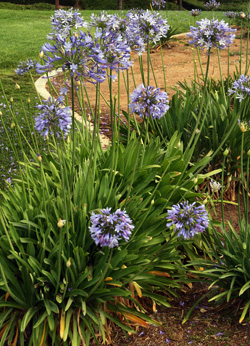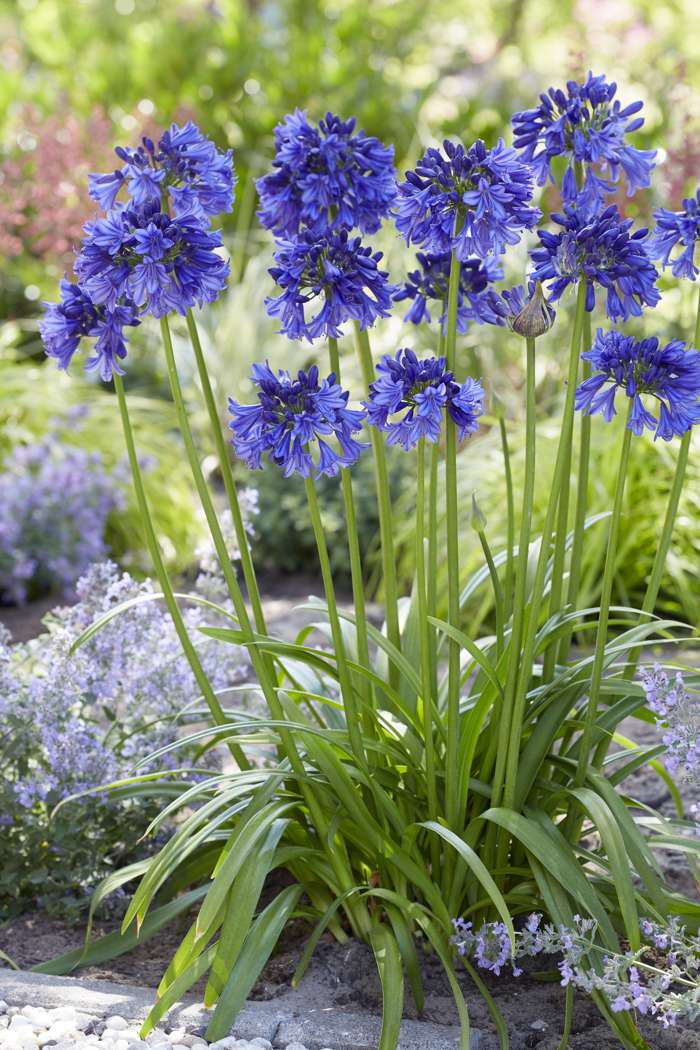Expanding Agapanthus: A Complete Guide to Beautiful Blooms
Expanding Agapanthus: A Complete Guide to Beautiful Blooms
Blog Article
Letting Loose the Secret to Successful Agapanthus Growing: Tips and Tricks for a Flourishing Yard
In the world of horticulture, cultivating agapanthus effectively needs a tactical approach that incorporates different facets of plant treatment. By comprehending the subtleties of agapanthus growing, one can create an atmosphere where these plants thrive and bloom generously.
Growing Agapanthus: Finest Practices
When growing Agapanthus, appropriate dirt preparation is essential for making certain effective growth and advancement of these beautiful blossoms. Agapanthus, typically recognized as Lily of the Nile or African lily, prospers in well-draining soil with a somewhat acidic to neutral pH level - Agapanthus. Prior to planting, it is vital to modify heavy clay soils with raw material such as compost or peat moss to improve drain and provide vital nutrients for the plants
To grow Agapanthus, choose an area that obtains complete sunshine to partial color, as this will certainly advertise healthy and balanced growth and plentiful flowering. Dig a hole twice the size of the plant's origin round and position the Agapanthus at the very same deepness it was previously expanding. Delicately backfill the opening with dirt, weighing down securely to get rid of any kind of air pockets around the origins.
Water the recently planted Agapanthus thoroughly and remain to keep the soil evenly damp, especially during the plant's energetic expanding season. Agapanthus. Applying a balanced plant food once a month can even more support the plant's growth and flowering. By following these best techniques for planting Agapanthus, you can create a spectacular display of these exciting blossoms in your garden
Ideal Dirt Issues for Agapanthus
For ideal growth and flowering success of Agapanthus plants, guaranteeing the soil problems are excellent is critical. Agapanthus prospers in well-draining soil with a slightly acidic to neutral pH degree varying from 6.0 to 7.0. This sort of dirt permits for appropriate water drainage, avoiding waterlogging which can result in root rot. To improve dirt drain, consider adding organic issue such as garden compost or peat moss when preparing the growing site. Moreover, Agapanthus favors soil that is rich in nutrients, so integrating a balanced fertilizer throughout the growing season can advertise healthy development and lively blooms.

Watering and Fertilizing Tips
To make sure healthy growth and vivid blooms, proper watering and feeding techniques are crucial for successful Agapanthus cultivation. Agapanthus plants profit from regular watering, especially throughout the growing season.
When it involves feeding Agapanthus, a balanced plant food with equal components nitrogen, phosphorus, and potassium can be used in the springtime to advertise healthy growth and flowering. Slow-release fertilizers are ideal for offering nutrients slowly over an extended duration. Stay clear of over-fertilizing, as this can result in excessive foliage growth at the expenditure of blooms.
Additionally, integrating raw material like garden compost right into the dirt can boost nutrient levels and boost soil structure, assisting in the overall health of the Agapanthus plants. By following these watering and feeding tips, garden enthusiasts can guarantee their Agapanthus plants thrive and create magnificent screens of flowers.
Pruning and Deadheading Methods
Correct pruning and deadheading strategies play a critical role in maintaining the health and looks of Agapanthus plants, complementing the necessary techniques of watering and feeding for successful cultivation. Pruning Agapanthus involves removing spent blossom heads, dead or yellowing fallen leaves, and overall shaping of the plant to promote far better growth. Deadheading, the procedure of eliminating faded blossoms, not only enhances the plant's look yet likewise urges further growing.
When deadheading Agapanthus, it is a good idea to trim off the flower stem at the base making use of sharp, tidy shears. This process reroutes the plant's energy from seed production back right into origin and vegetation development, promoting a healthier and much more robust plant. Regular deadheading can prolong the flowering duration of Agapanthus and prevent self-seeding, which can cause overcrowding.
In terms of trimming, Agapanthus normally take advantage of a light trim after flowering to tidy up the plant and urge fresh growth. Cutting down the spent flower stems and getting rid of any type of damaged or dead foliage aids maintain the plant's vitality and overall appearance. However, it is necessary to prevent cutting right into the crown of the plant, as this can weaken its health.

Protecting Agapanthus From Vermins and Diseases
Applying efficient insect and illness management approaches is critical to protecting the wellness and vitality of Agapanthus plants in cultivation. Agapanthus are official source typically sturdy plants, but they can still succumb to various bugs and diseases otherwise effectively cared for. One typical insect that impacts Agapanthus is the Agapanthus borer, a caterpillar that tunnels into the plant, creating damage to the flowers and fallen leaves. To stop invasions, regular inspection of the plants is crucial. If borers are spotted, they can be by hand eliminated, or insecticidal soap can be used as a control step.
Along with bugs, Agapanthus are susceptible to diseases such as root rot and fungal fallen leave areas. These problems can commonly be protected against by making certain proper drainage and avoiding overwatering. Influenced components of the plant must be promptly removed to prevent further spread if signs of illness appear. Fungicides might additionally be made use of as a treatment measure, adhering to the maker's guidelines thoroughly. By remaining alert and resolving parasite and disease problems quickly, gardeners can help their Agapanthus flourish and thrive.

Verdict
In verdict, successful growing of agapanthus needs over at this website appropriate growing methods, excellent soil problems, ample watering and fertilizing, normal pruning and deadheading, and protection from insects and conditions. By following these techniques and suggestions, garden enthusiasts can make sure a prospering yard filled with gorgeous agapanthus blossoms. Agapanthus. Keep in mind to maintain regular treatment and interest to detail to promote the wellness and long life of these sensational plants
When planting Agapanthus, proper dirt preparation is necessary for making certain successful development and advancement of these attractive flowers.Water the newly planted Agapanthus completely and proceed to keep the dirt evenly wet, especially during the plant's energetic expanding season.For ideal growth and growing success of Agapanthus plants, making sure the soil problems are suitable is vital. When transplanting or planting Agapanthus, ensure the dirt is well-prepared to supply the essential foundation for the plants to establish themselves effectively. One typical parasite that influences Agapanthus is the Agapanthus borer, a caterpillar that passages right into the plant, creating damages to his response the fallen leaves and flowers.
Report this page